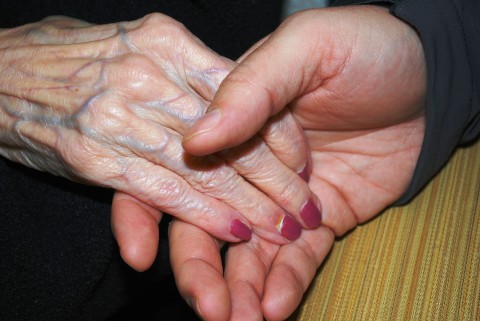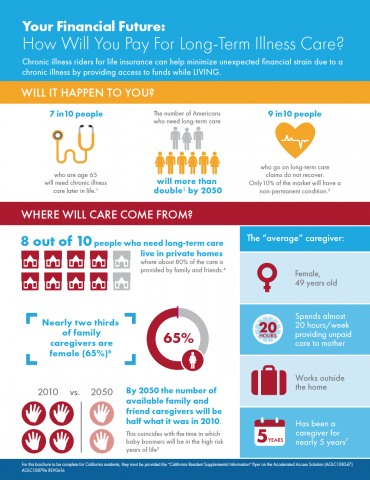Baygroup Blog
Welcome to our blog! Here you will find posts and comments from our experts. You can filter the posts by the related insurance products or author.
Melissa Barnickel had a wonderful experience speaking at the Society of Financial Professionals on March 13th to discuss funding options for a long term care event. She also served as a panelist at the Intercompany Long Term Care Insurance Conference to discuss long term care insurance options in Las Vegas, NV on March 19th.
 We all know that breaking news is pretty synonymous with breaking bad news. OK, usually with very bad news. After all, as the saying goes, “if it bleeds, it leads.” Ouch! Controversy, both real and manufactured, grabs our attention, sells newspapers, and garners views on digital devices.
We all know that breaking news is pretty synonymous with breaking bad news. OK, usually with very bad news. After all, as the saying goes, “if it bleeds, it leads.” Ouch! Controversy, both real and manufactured, grabs our attention, sells newspapers, and garners views on digital devices.
 What’s the sentiment at the heart of long term care planning? No, it's not fear. (Of care costs or gaps in Medicare.) It's not even concern. (About medical conditions or Medicaid eligibility.) I’m talking about love. Yes, I know Valentine’s Day is in the rear view mirror. That’s OK. The kind of love I’m talking about transcends flowers and cards.
What’s the sentiment at the heart of long term care planning? No, it's not fear. (Of care costs or gaps in Medicare.) It's not even concern. (About medical conditions or Medicaid eligibility.) I’m talking about love. Yes, I know Valentine’s Day is in the rear view mirror. That’s OK. The kind of love I’m talking about transcends flowers and cards.
It’s sad but true: by the time most people realize they wish they had a long term care insurance policy, they are too sick or old to buy one.
So, in an effort to mitigate the crushing financial toll long term care will have with no planning, many of them end up doing short-term planning– let’s call it crisis planning. Crisis planning isn’t about optimal strategies. It’s all about limiting the financial destruction and trying to make up for the fact that no real plan for how to pay for care is in place.
Getting long term care planning done well in advance of when you actually need it stacks the deck in your favor. That’s why people in their 40’s-60’s are benefiting themselves by visiting the topic of long term care planning decades in advance of their 80’s, when they are most likely to have a claim.
Modern consumers have greatly benefited from the ability to comparison shop and order from virtually any purveyor. This reality has even started to infiltrate the healthcare market.
 However, long term care decisions for yourself or a loved one tend to be more difficult and cannot necessarily be made at the touch of a button through technology like Siri and Alexa. Whether the search is for a home health care worker, or, a facility such as an assisted living facility or nursing home, the choice is often a complex and nuanced one.
However, long term care decisions for yourself or a loved one tend to be more difficult and cannot necessarily be made at the touch of a button through technology like Siri and Alexa. Whether the search is for a home health care worker, or, a facility such as an assisted living facility or nursing home, the choice is often a complex and nuanced one.
 November is long term care awareness month. Even though long term care is often discussed in the news, it is frequently confused with healthcare.
November is long term care awareness month. Even though long term care is often discussed in the news, it is frequently confused with healthcare.
Holidays and long term care planning go hand-in-hand. 
Genworth has released its 2017 cost of care findings.
The national median hourly rate for homemaker services rings in at $21/hour. Meanwhile, the national median hourly rate for home health aide services is $22/hour. The median for adult day care is $70/day. While assisted living facilities will cost you $3,750/month. Lastly, nursing care for a private room will run a median average of $267/day, while a semi-private room is a daily rate of $235.
More information can be found at the following link:

Alzheimer’s disease is a type of dementia that is characterized by problems with memory, behavior, and thinking. Symptoms usually appear slowly and worsen with time, eventually interfering with everyday tasks. Alzheimer’s makes up 60-80% of dementia cases, but it is important to remember that not all dementia falls under the diagnosis of Alzheimer’s. While mild memory loss can be a normal part of aging, Alzheimer’s is characterized by growing severe enough to interfere with daily tasks. The disease can be broken down into seven specific stages outlined below to help provide an idea of what to expect if you or a loved one is diagnosed:
The number of Americans who need long term care will more than double by 2050. Will you be ready?


